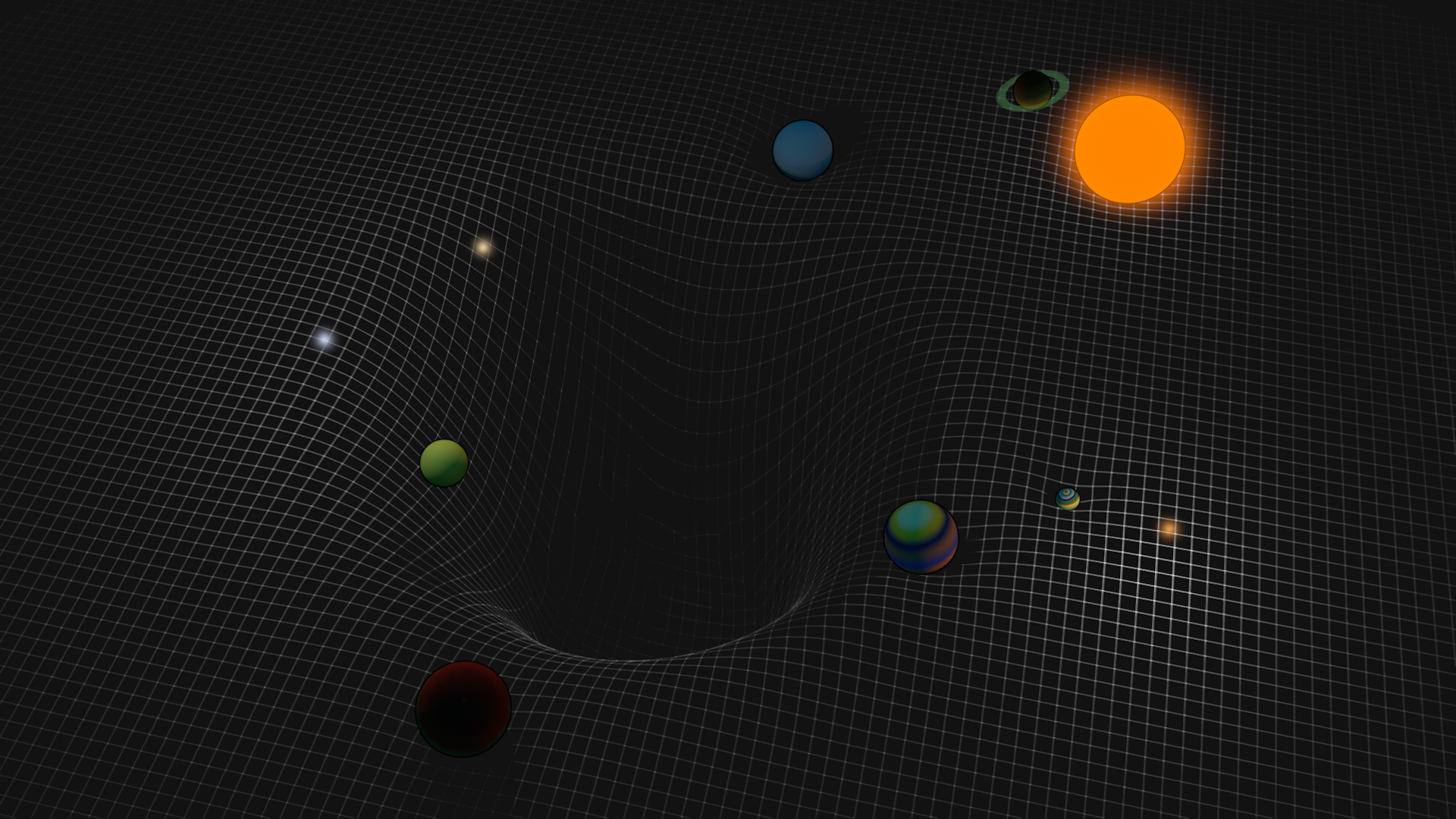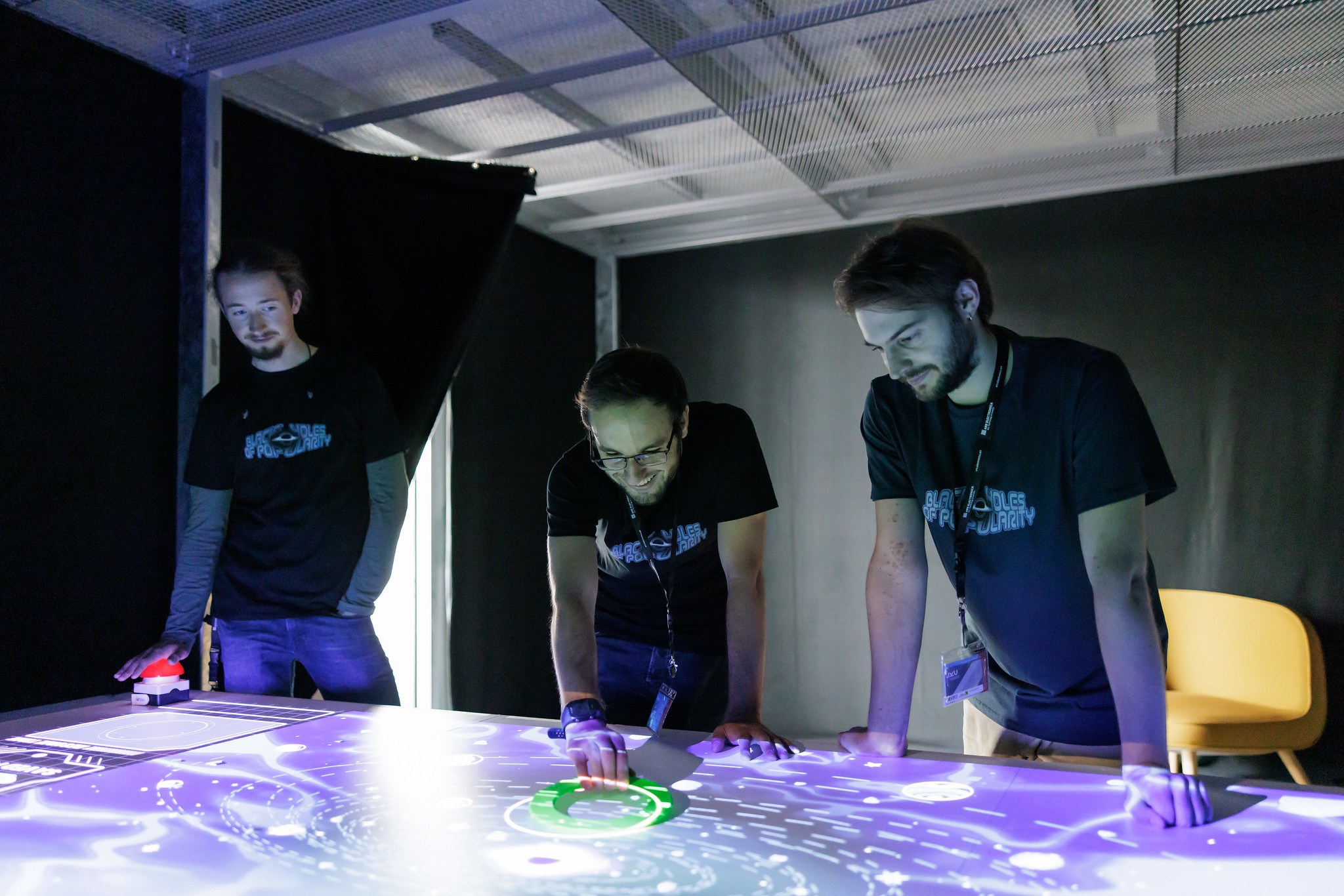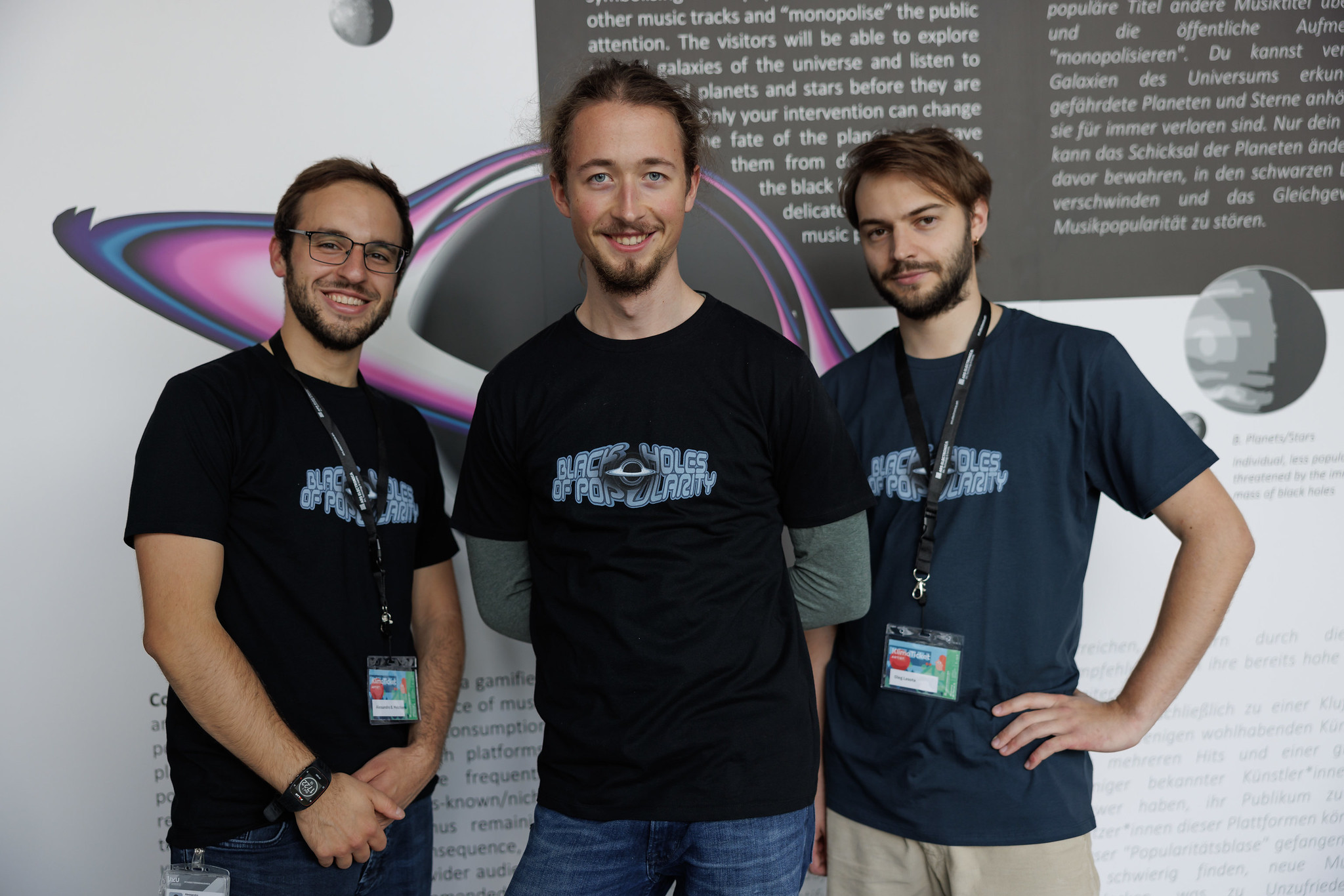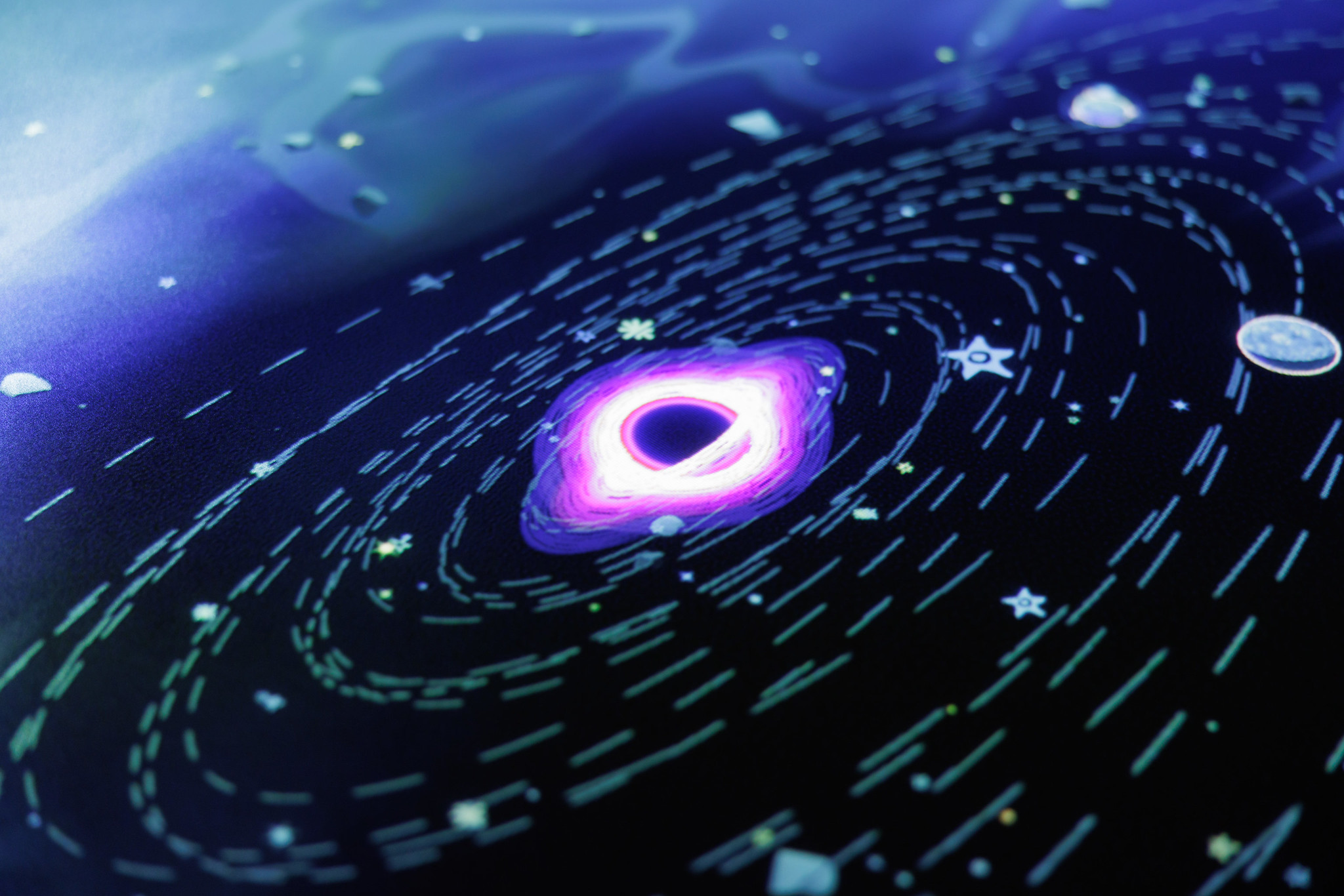Black Holes of Popularity
Science Communication Project for the Linz Ars Electronica Festival 2022 - PI role
Black Holes of Popularity has been presented at the Linz Ars Electronica Festival 2022. A teaser video is available on Youtube. I also discussed the project for the university’s newspaper (available in German here).
I served as the Principal Investigator (PI) for this project. My responsibilities included planning, assigning roles and responsibilities, recruiting, fostering idea and contributions, and coordinating the project. Implemented in Unity and Python.
PI: Alessandro B. Melchiorre
Co-PIs: Oleg Lesota and Markus Schedl
Funding: 62,000 EUR
Runtime: March - Sept 2022
People: 11

“Black Holes of Popularity” (BHP) is a gamified art experience that exposes the issue and consequences of music popularity bias, in which popular music tracks tend to be over-represented on music consumption platforms and leave no opportunity for less-known and niche tracks and artists to be heard. Popular tracks are often by default recommended on music streaming services and social media platforms; they are staples of numerous radio transmissions. This, in a “rich get richer” fashion, leads to a further increase of their already-high popularity, leaving less popular music unreachable for the audience to enjoy.
BHP employs the metaphor of a music universe to represent the diversity of music styles and genres. Within this universe, where the galaxies represent music genres, the cosmic bodies such as planets, comets, and stars, are representative of existing music tracks (e.g. Moonglight Sonata by Beethoven as a neutron star). The most popular tracks, however, appear as black holes that threaten to swallow all the other cosmic bodies, or worse, entire galaxies. In BHP, this symbolizes how popular tracks might overshadow less-popular tracks and devour all the public attention.
In this context, the visitors of the BHP exhibit will impersonate a powerful time and space adventurer whose action can affect the universe and change the fate of the cosmic bodies. Will the visitors work together to save the less popular tracks from their doom? Or will they collapse the whole universe into a single massive black hole? Every decision will lead to consequences of cosmic proportions.


